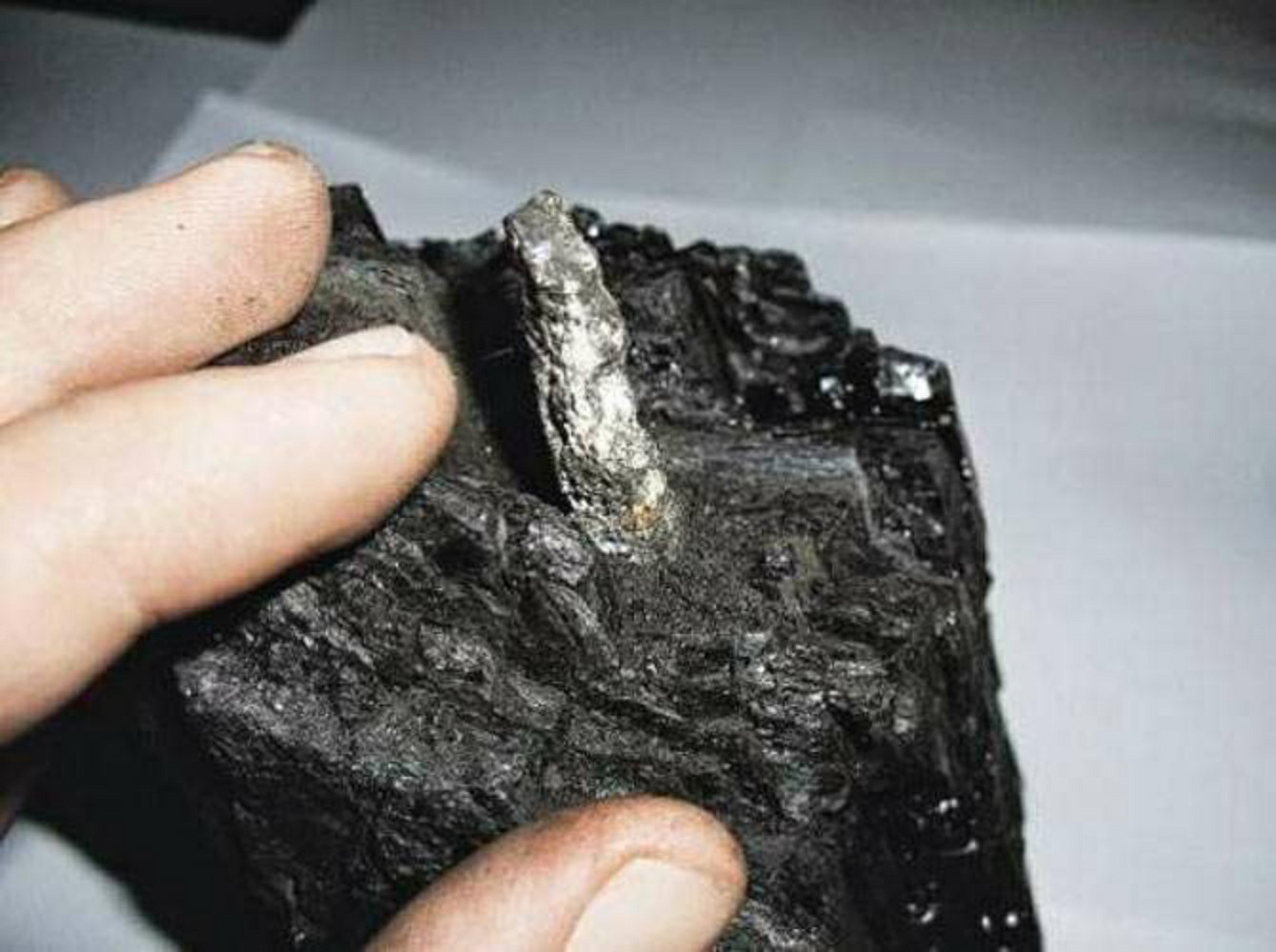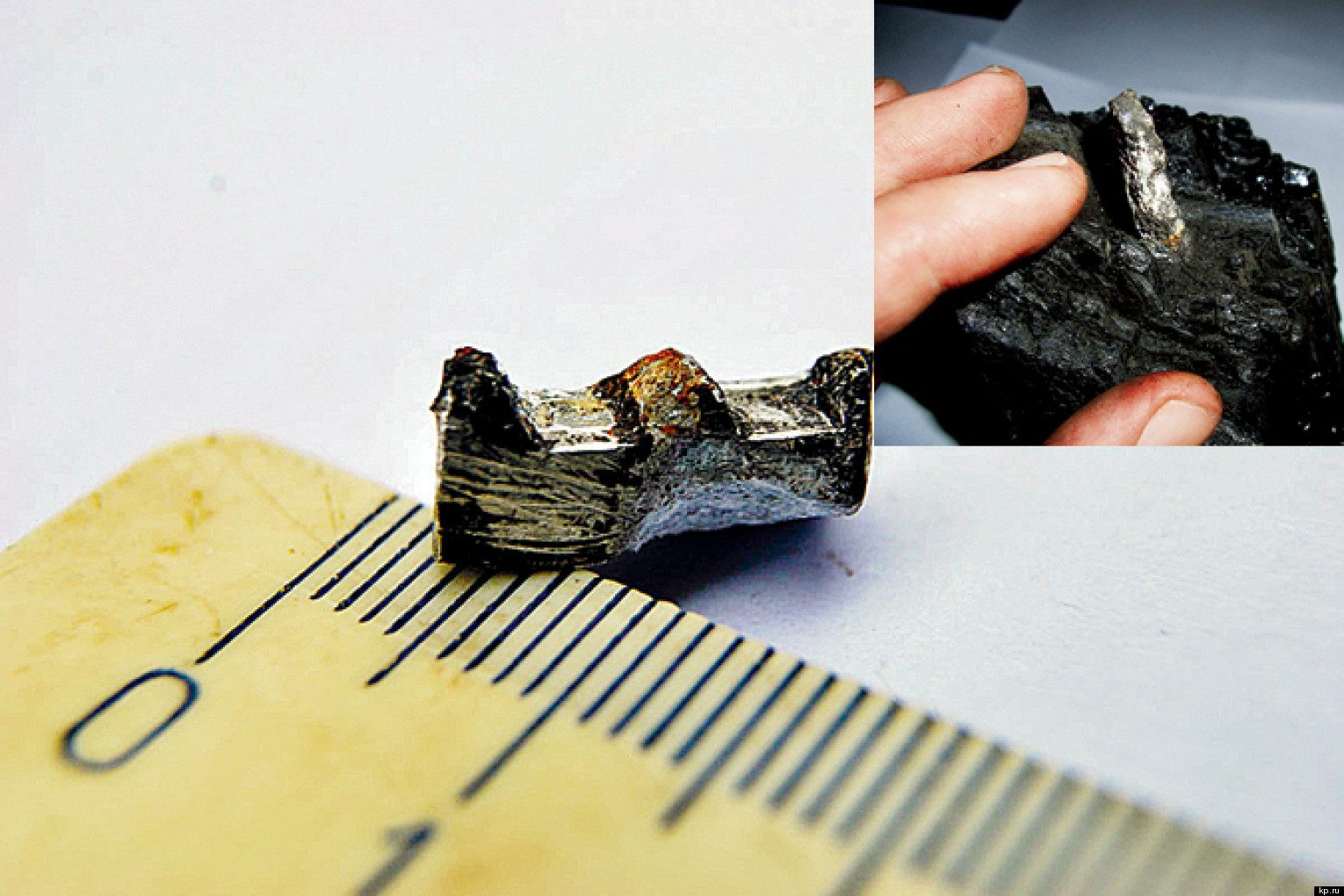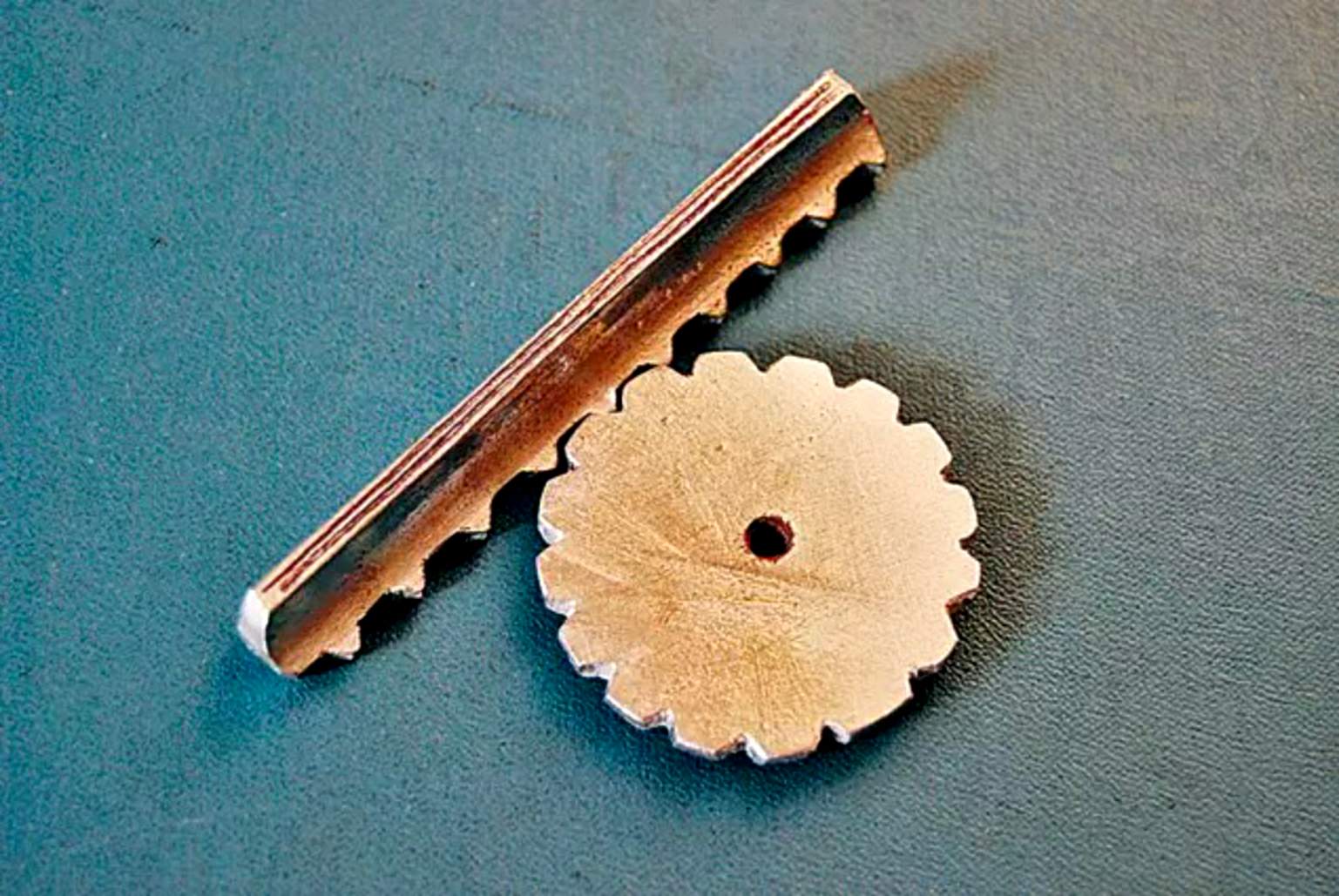According to the international Russian broadcasting service “Voice of Russia”, a few years ago, archaeologists in Vladivostok discovered a 300-million-year-old piece of aluminum machinery. A gear wheel, as per experts, appears to be man-made and not the consequence of natural forces.

According to author Yulia Zamanskaya, on a frigid winter night, while lighting his fireplace, a Vladivostok (near the borders of China and North Korea) homeowner named Dmitry, noticed something odd about a chunk of coal he had obtained to heat his home during the winter.
He discovered a rail-shaped metal piece pressed into a coal chunk. Fascinated by what he had found, Dmitry contacted biologist Valery Brier, in the seaside Primorye region.
Dmitry was astonished to learn the supposed age of his discovery when prominent experts examined the metal artifact. In spite of its stated age of 300 million years, many mainstream researchers believed that the metal detail did not form naturally but was instead fabricated by someone. However, the question of who might have made an aluminum gear in the dawn of time remains unanswered.
According to the experts, the Vladivostok resident, Dmitry, found embedded in his coal a shiny metal bar with teeth, like those of a bar or plate gear built to mesh with the teeth of a wheeled gear.

Initial examination of the strange object led researchers to assert it looked “very much like a toothed metal rail, created artificially. It was like parts that are often used in microscopes, various technical and electronic devices,” wrote Komsomolskaya Pravda (daily Russian tabloid newspaper, founded in 1925).
The Pennsylvanian coal came from the Chernogorodskiy mines from the Khakasis region north of Mongolia. The coal deposits of that region date 300 million years back, Russian experts inferred that the metal detail found in these deposits must be an age-mate of the coal.
Biologist Valery Brier, as per Komsomolskaya Pravda, assisted in analyzing the strange object (artifact). X-ray diffraction revealed that it was mostly aluminum with about two to four percent magnesium. This one-of-a-kind alloy isn’t commonly found in modern production. Brier further pointed out that refined aluminum denotes a high level of technological sophistication.

An object like this that’s embedded in supposedly ancient coal is so difficult to explain from the long-ages perspective that some speculate ancient intelligent aliens left it on earth in some bygone era. (It is known from the study of meteorites that there exist extra-terrestrial aluminum-26 which subsequently breaks down to magnesium-26. The presence of 2 percent of magnesium in the alloy might well point to the alien origin of the aluminum detail.)
This desperate suggestion presumes that the coal’s age assignment is true. One might as well say that the reptiles from which dinosaurs supposedly evolved, whose remains occur in some rare Pennsylvanian outcrops, were smart enough to smelt and cast metals.

However, there are plenty of documented, though not widely known, reasons why the methods used to date ancient earth materials are faulty. In fact, when “300-million-year-old” coal is examined for carbon, it routinely returns measurable radioactive carbon-14, which would have disappeared by radioactive decay in under 90,000 years.
Also, the Bible’s historical information documents a world that is only thousands of years old. In this context, deeply buried coal deposits were produced by the historical Flood of Noah. The people who were alive back then could have provided coal-embedded artifacts. Apparently, this one from Russia is not the first.
In the 1940s, a boy in West Virginia found a bronze bell encased in coal that he was shoveling into his home’s furnace. Like the aluminum gear, this metal was a unique brassy alloy. A similar anecdote alleged that the late Frank Kanard, who had his written testimony notarized, extracted an iron cup with opposing pour spouts from a large lump of Pennsylvanian coal in 1918 while fueling his furnace in Oklahoma. Like with the Russian coal, most secular scientists consider Pennsylvanian rocks to be about 300 million years old.
Perhaps some ancient coal has melded with a piece of modern machinery from Khakasis. Perhaps an old explorer dumped an even older bronze bell down a well for miners to recover later from West Virginia’s mountains. Also, it’s feasible that coal might have been used to line a more contemporary iron cup. More research is required into this and other ostensibly human artifacts found in coal.
And such research should take into account the possibility that these artifacts were created by individuals who lived during the catastrophic burying of enormous forests to make way for coal. Expert metal artisans, for example, lived among the pre-Flood peoples, according to Scripture. Future studies may reveal that biblical history makes even more sense than tales of out-of-place artifacts in deep-buried coal seams.




